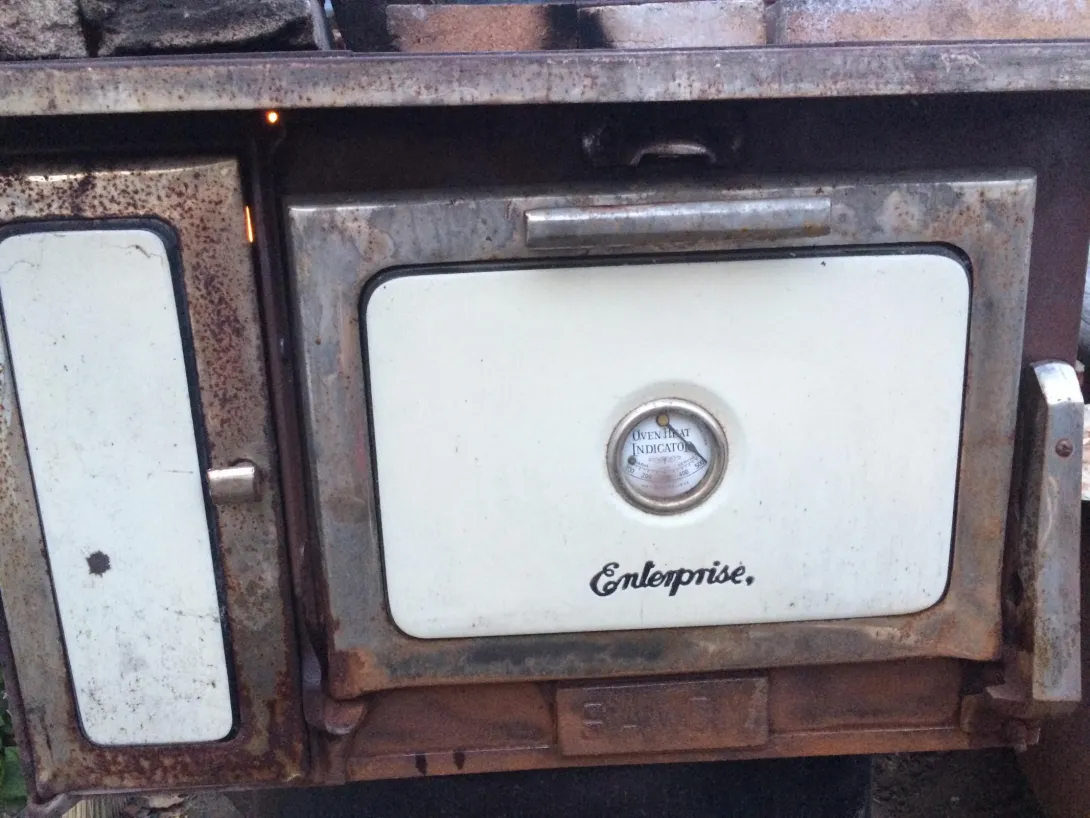
I was out with a friend to help him pick up some junk he'd bought from a farmer that was retiring and I noticed a wood cook stove in the farmers scrap heap. The stove was missing the lids and was badly rusted, but for less than the cost of a pizza downtown it was mine.
I've cleaned it up a bit after that picture was taken.
One thing I've wondered is how does a stove layout (offset firebox) compare to something like a barrel oven where the fire is directly in the middle?
Fig 1 in http://www.kitchenqueenstoves.com/kitchenqueenstoves/kqwcs.htm shows the internals for old style stoves.
Well, I've never used a barrel oven, so wouldn't be able to compare.
Have cooked all of last winter on the wood cook stove though and tried to bake some bread in it. Wasn't a big success. Hard to get up to high temps, didn't retain its heat very well and the layout of the firebox (in mine it was to the right of the oven) made sure I had to turn the bread half way in order to get it fully cooked on both sides. The oven heated unevenly. I guess it depends on the way the heat is transmitted to the oven whether o not it's heating evenly on all sides and retaining its heat well.
Not a new concept - probably the first attempt at some efficiency was the Aga - then the Rayburn. You'll find these (and similar) in rural houses all over the UK. The house we're in now had a cola-fired Rayburn when we moved in - it was 55 years old. We replaced it with a gas fired one.
So basically the firebox lets heat go directly up to the hot plate and usually over the top of the oven compartment (the chimney will be at the opposite side to the firebox). There may also be a path for hot gases to go under the oven - or between the top oven and the bottom oven. The oven casing will heat by conduction which will radiate heat into the oven chamber.
Traditionally, Agas are always hot - except when they're not. They're super insulated, so you run a small fire (solid fuel, gas, oil and now electricity) and the insulation keeps the heat in - you cook as much as possible in the oven, only using the top hot-plates to quickly get stuff to temperature (e.g. boiling potatoes would be done in the oven!) Modern Agas have more controllable heat sources.
Rayburns and other stoves (Ours is a Stanley) are partial stored heat - and usually you can control the heat source some way ( we have a temperature dial on the Stanley, but the coal-fired Rayburn was a combination of loading the coal, and the top & bottom vents to control air flow). The down-side of having a tonne of cast iron is the time it takes to heat up, but a bit of planning helps here.
-Gordon
Opps. I should clarify what I mean by barrel oven. I mean a white oven like: http://www.handprintpress.com/bookstore/build-your-own-barrel-oven/ Not the black masonry ones with the fire in the baking chamber.
Kinda too bad that baking bread didn't work in your oven Alefare. I've baked in mine a couple times with good luck after the initial charred loaves. (I shouldn't have used the middle rack) But mine must have been an economy model, as it's 90% paper thin sheet metal with strategic cast iron for reinforcement.